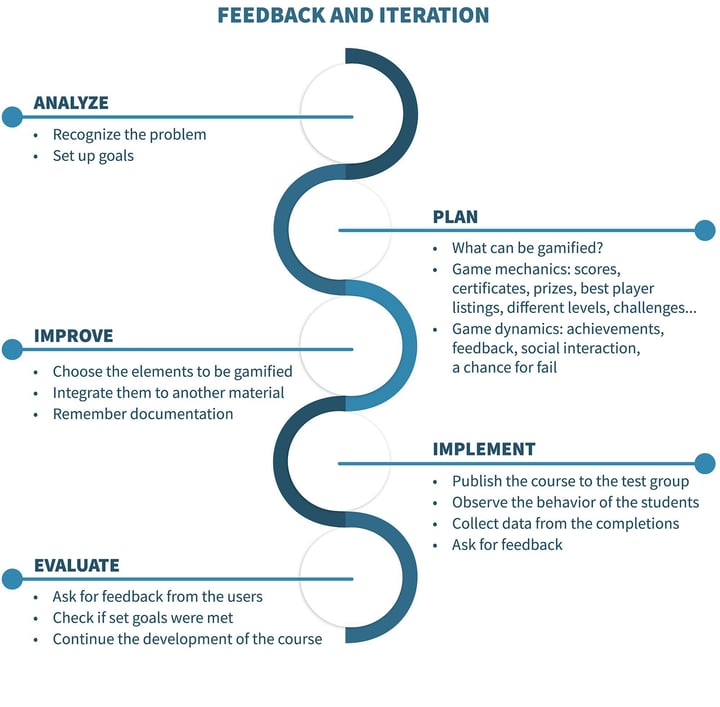What is gamification, and why should you do it?
When talking about online courses, the use of game elements often comes up. Some educators and students long for a game-based approach to digital learning, while others are wary of it – why should adult learning include game elements?
Gamification is the addition of various elements familiar from games to non-gaming environments. When gamifying online courses, the goal is to increase students’ interest in the topic and their engagement in reviewing the study material. Gamification is often also aimed at increasing students’ intrinsic motivation by harnessing the natural human tendency to be interested in games.
The benefits of gamification include
- Increasing engagement
- Improving motivation, encouraging the achievement of goals
- Enhancing recall of what has been learned
- Encouraging teamwork when used correctly
- Providing valuable feedback.
The old saying “a good servant, but a bad master” also applies to gamification. That is, a game-based approach should never be the end goal of an online course, but rather a feature that makes the course more interesting and enhances learning. It is just one tool among others. Before gamifying a course, it is important to think carefully about what you are trying to achieve by it. Does adding game elements suit the course theme and your online training strategy?
In conventional classroom training, the motivation of students may well depend not only on their desire to learn what is being taught but also on wanting to show their skills to the expert and charismatic lecturer. Online training often lacks the two-way, real-time interaction between lecturer and student, and game elements can be used to enrich it with interactive and motivating content.
A well-implemented game element is
- Learner-centered: it should help students achieve their learning goals
- Practical: the content should be relevant and present scenarios that are possible in real life, for example
- The focus should be on content and design, not technology. The aim is not to create a new game but to improve the learning outcomes of the online course.
An excellent example of effective gamification of online learning is the WordDive language learning application. It is worth checking out, even just as a benchmark to compare your project too!
Gamification uses elements from game mechanics and game dynamics, such as
- Giving feedback to the player
- Various opportunities for social interaction
- Storytelling and the element of surprise
- Best player listings
- Various certificates
- Points and the game’s currency
- Progress bars and level-to-level transitions
- Simulations of real-life situations.
At its simplest, gamification can mean adding a multiple-choice question or another interactive element to a course. For example, students may be asked to choose the right course of action in a particular imaginary situation or to associate a word with its correct definition, after which feedback is given on the success of the task.
It is important to make sure that students receive feedback on the tasks they complete. The feedback on students’ performance and progress provided in the online environment helps them develop, and is motivating.
Steps to gamifying an online course

A wide range of tools is available for gamification. Many learning platforms provide tools for adding game elements and also make it possible to embed content, such as H5P elements, from other platforms.
A well-made online course is a balanced package consisting of text, images, videos, interactive (gamified) elements, and questions that measure skills as well as encouraging reflection. The implementation of an online course, whether game-based or otherwise, begins with thinking about the value proposition and learning objectives. It then proceeds to outline the structure of the course as a whole, and from there expands to details. In content development, it is important to move forward in such a way that learning goals and support of them take priority.
More examples of game elements can be found here: Yu-kai Chou: Octalysis
